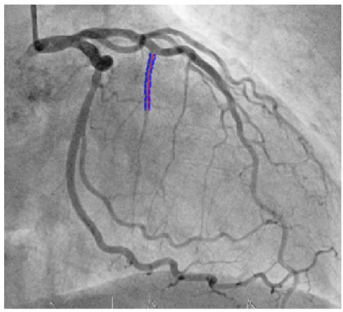Siemens Healthineers and UCL investigate the use of quantum machine learning algorithms to improve cognitive computing in healthcare. Project PIs: Simone Severini, Mark Herbster and Peter Mountney.
The healthcare industry is experiencing an explosion of data and at the same time the cost of healthcare is rising. Cognitive computing in healthcare is using big data in conjunction with advanced machine learning and supercomputers/cloud services to help doctors detect diseases earlier, improve therapeutic outcomes and ultimately reduce the cost of care. In this project Siemens Healthineers and UCL investigate the use of quantum machine learning algorithms to improve cognitive computing in healthcare.

Image Classification with Quantum Pre-training and Auto-encoders
Computer vision has a wide range of applications from medical image analysis to robotics. Over the past few years, the field has been transformed by machine learning and stands to benefit from potential advances in quantum computing. The main challenge for processing images on current and near-term quantum devices is the size of the data such devices can process. Images can be large, multidimensional and have multiple color channels. Current machine learning approaches to computer vision that exploit quantum resources require a significant amount of manual pre-processing of the images in order to be able to fit them onto the device. This paper proposes a framework to address the problem of processing large scale data on small quantum devices.

This framework does not require any dataset specific processing or information and works on large, grayscale and RGB images. Furthermore, it is capable of scaling to larger quantum hardware architectures as they become available. In the proposed approach, a classical autoencoder is trained to compress the image data to a size that can be loaded onto a quantum device. Then, a Restricted Boltzmann Machine (RBM) is trained on the D-Wave device using the compressed data, and the weights from the RBM are then used to initialize a neural network for image classification. Results are demonstrated on two MNIST datasets and two medical imaging datasets.
Reference: Piat, S., Usher, N., Severini, S., Herbster, M., Mansi, T. and Mountney, P., 2018. Image classification with quantum pre-training and auto-encoders. International Journal of Quantum Information, 16(08), p.1840009.
Graph Cut Segmentation Methods Revisited with a Quantum Algorithm
Quantum computers take advantage of inherently quantum mechanical features to process information. These devices can offer polynomial, or even exponential speed-ups to conventional, classical computers. We attempt to show the possibility of practical, near-term computer vision applications for such devices. In particular, we look at solving the task of image segmentation with a quantum algorithm.

Reference: Tse, L., Mountney, P., Klein, P. and Severini, S., 2018. Graph Cut Segmentation Methods Revisited with a Quantum Algorithm. arXiv:1812.03050.
Training and Meta-Training Binary Neural Networks with Quantum Computing
Quantum computers promise significant advantages over classical computers for a number of different applications. We show that the complete loss function landscape of a neural network can be represented as the quantum state output by a quantum computer. We demonstrate this explicitly for a binary neural network and, further, show how a quantum computer can train the network by manipulating this state using a well-known algorithm known as quantum amplitude amplification. We further show that with minor adaptation, this method can also represent the meta-loss landscape of a number of neural network architectures simultaneously. We search for this meta-loss landscape with the same method to simultaneously train and design a binary neural network.
Binary Classification on Gate Quantum Computing
Small-scale quantum computational devices are currently available, and a universal quantum computer is forecast to be built within the next decade. It is thus important to understand both the impact and potential applications of the technology.

Reference: M. Schuld, M. ,, and F. Petruccione. Implementing a distance-based classifier with a quantum interference circuit EPL (Europhysics Letters) 119.6 (2017), p. 60002
 Close
Close

